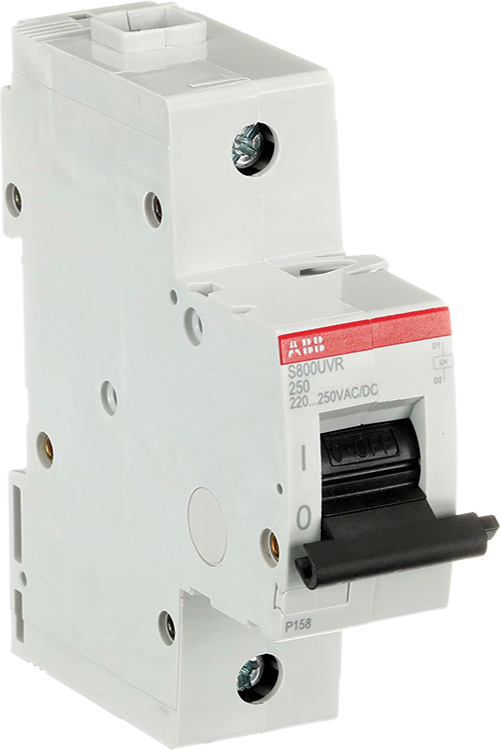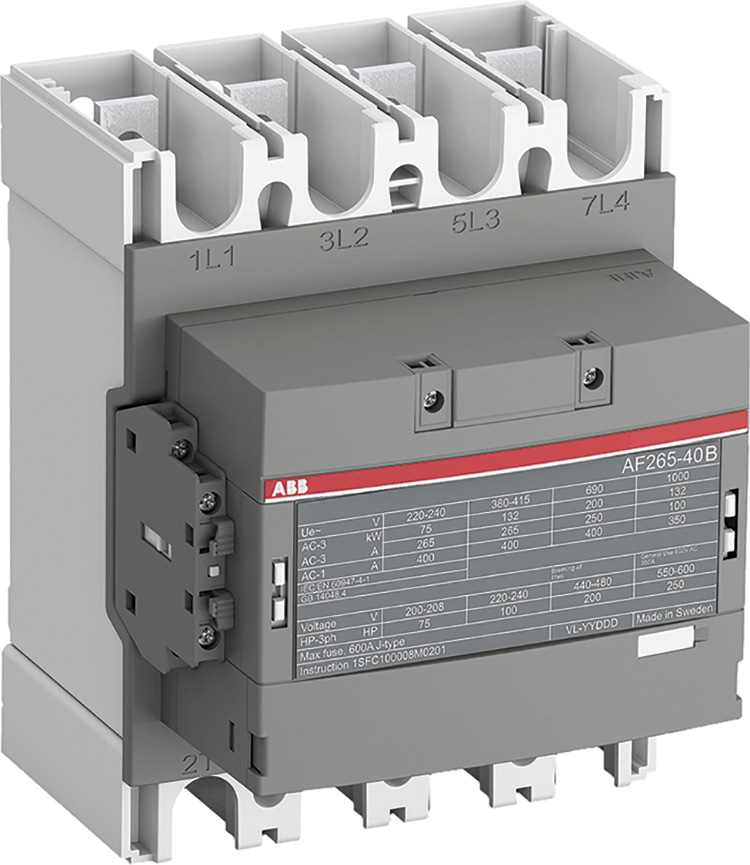Electrification In The Indian Railways – A Mammoth Task To Help Achieve The Objective Of ‘Mission Raftar’
India has prioritised modernizing its railway infrastructure. Some of the major goals of the Railways are 100% electrification of the track network, renovation of existing railway stations and the building of new railway track over the next 20 years, reveals Gopuraj N., Division Sales Director – Smart Power & Smart Buildings Divisions, Electrification Business Area, ABB India, in an exclusive interview with Engineering Review. Given that electric traction is demonstrably less polluting than the diesel mode, it may be more environmentally beneficial in areas with sensitive flora and fauna. Electric traction may lessen air pollution and noise pollution while also causing less disruption to the local wildlife. The Railways are also moving closer to the ‘Net zero mission’ and climate change mitigation objectives, opines Gopuraj. Indeed, the global electrical giant, known for its multi-faceted engineering prowess, has been working closely with the Railways to give a new fillip to its time-bound modernization program. Excerpts:
Q. The Indian Railways is one of the largest railway systems in the world. Please comment on the gigantic task of electrifying the entire network of railway lines in the country.
India has prioritised modernising its railway infrastructure – whether it is the debut of cutting-edge, semi-high speed, premium trains such as Vande Bharat Express, Tejas Express, Humsafar Express or the ambition of introducing bullet train. Some of the major goals are 100% electrification of the track network, renovation of existing railway stations and the building of new railway track over the next 20 years.
Indian Railways is regarded as one of the connectivity backbones of the country and any advancements it makes, has significant impact on the country’s economy paving the way for fast growth and development. ABB is well placed with its advanced technology to support Indian railways in their ambition to 100% electrify their tracks, sustainably
ABB has a strong history in railways having manufactured locomotive with the latest technology as far back as 1944. ABB introduced Railway locomotives through Indian Railways in the year 1995 with WAG 9 25KV AC electric locomotives. We are proud to be a partner of one of the largest railway networks in the world since then.
Q. How much do the electrified lines account for in the total tracks to be electrified?
Until March this year, Indian Railways electrified 58,812 Route Kilometres (RKMs) with 25 kV 50 Hz AC electric traction which is about 90% of the total broad-gauge network (65,300 RKMs) of Indian Railways. Out of a total of 58,812 RKMs, the Central Organization for Railway Electrification (CORE) has carried out electrification work of 45,912 RKMs which is roughly 78% of the electrification work of the entire Indian Railways. CORE along with other organizations has planned to electrify the entire broad-gauge network routes of Indian Railways by December 2023.The pace of electrification has gathered momentum in the last few years as since 2014, a record 37,011 RKM has been electrified against electrification of 3,874 RKM during 2007-14. Remarkably, out of the total 58,812 RKM electrified so far on pan India basis 50% has been electrified only during the last five years.

Q. Which are the electrification projects you have accomplished recently?
Most recently, Kanpur Metro has deployed ABB India’s electrification solutions for safe, reliable and quality power distribution. ABB’s latest technology helps facilitate smooth, consistent power distribution, making the commute seamless and comfortable for passengers. ABB India has been contributing to Indian Metro systems by providing electrification solutions to 13 metro rail projects across India. ABB also provided traction technology and switchgear for India’s first semi high speed train Vande Bharat and various other rolling stock.
Q. What are the cutting-edge technologies you have used in your projects and with what advantage?![DC and AC traction power supply applications]()
ABB has been a leading player globally and has a long history of providing innovative and energy-efficient technologies to the railway sector. We have been manufacturing and servicing all major Electrification components & subsystems in urban, intercity and high-speed networks for rail infrastructure and rolling stock. This is backed up by a strong life-cycle service support, including retrofits and maintenance for our large global installed base. When it comes to rail infrastructure, the key focus areas are DC and AC traction power supply applications. ABB’s innovative Low Voltage Products & Solutions are designed for heavy-duty traction applications. Highly energy efficient power supply products and solutions play a vital role in building and maintaining modern and reliable railways.
Q. How do you tackle energy losses in transmission?
Electricity losses possibly occur at each stage of the power distribution process, beginning with the step-up transformers that connect power plants to the transmission system, and ending with the customer wiring. The system consists of several key components: step-up transformers, transmission lines, substations, primary voltage distribution lines, line or step-down transformers, and secondary lines.
Some known ways to tackle energy losses in transmission are by utilising a high-quality electrical conductor with high conductivity and low resistance. To lower dielectric losses and leakage current losses. Experts recommend to use a dielectric substrate with a high dielectric constant and low loss tangent. Radiation losses in transmission lines can be effectively decreased by using grounded coplanar waveguides and coplanar launched microstrip configurations, which are a hybrid of microstrip and coplanar waveguides.
Q. What are the challenges brought by underground transportation and high-speed trains in certain sectors?
There are certainly a few key challenges during the implementation of any underground or high-speed transport apart from the absorption of new technological developments that keep taking place and a few of them are highlighted below:
- Detailed Alignment Choice: Detailed alignment choice is one of the major concerns, especially when it is overground, keeping in view land acquisition challenges versus providing access to the population along the corridor. If the alignment goes closer to urban growth areas to provide access, there would be greater issues of land acquisition.
- Location of Stations: The location of stations is an important issue to be addressed always, as it impacts the travelling population, ease of access, last mile connectivity and various such issues.
- Number of Stations: In general, for MAHSR, there would be a demand for more stations. While this will increase the catchment, it could reduce the average speed.
- Evacuation facilitation: At each station, it would be important to have fast and multiple means of evacuation, to increase the catchment and propensity to travel.
- Land Acquisition: This is a critical issue, especially where the alignment would veer off from existing railway lands.
- Human Resource Development: A challenge remains to develop a strong people system & train Indian engineers and managers for design, construction and operations to standards that are essential for high-speed rail including stringent safety standards.
Q. How are you geared to meet the emerging trends and challenges?
With the need for more connectivity and growth of railways, it has become necessary to install advanced electrical systems and equipments in order to electrify Railways. These systems present significant challenges and call for specialised technical knowledge during installation, operation, and maintenance.
ABB has the latest state-of-the-art technology rail certified products to offer for a reliable and dependable solution and Our Team of Scientists & Researchers help the industry to address the new trends & challenges.
Q. Please throw some light on your wherewithal and resources.
As explained earlier, ABB strongly values the partnership with Indian railways and continues to innovate in products / solutions & technologies by investing over 1 B$ globally on R&D across various industry verticals & sectors every year.
Q. What are the implications of modernization of railways on electrification?
Reduction in pollution for both the environment and the travellers is one of the main benefits of electric traction.
Given that electric traction is demonstrably less polluting than the diesel mode, it may be more environmentally beneficial in areas with sensitive flora and fauna. Electric traction may lessen air pollution and noise pollution while also causing less disruption to the local wildlife. The Railways are also moving closer to the “Net zero mission” and climate change mitigation objectives.
Railway electrification uses Global cutting-edge technology which lowers maintenance costs and enhances power supply system dependability. Electric locomotives are more technologically advanced, faster and tend to have a longer lifespan. They also offer substantially better energy efficiency, lower emissions, and lower operating costs. Electric locomotives are also usually quieter, more powerful, and more responsive and reliable. Electrification will help in increasing average speed of Freight Trains thereby help in achieving the objective of “Mission Raftar”.








